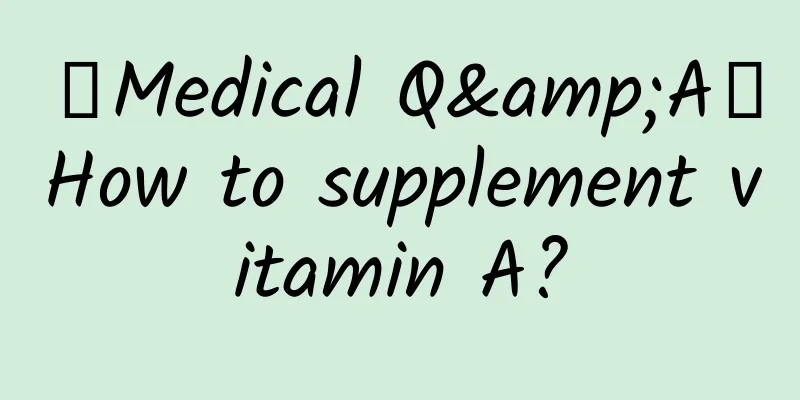What causes uterine fibroids?

|
One of the more common diseases among women is uterine fibroids. Uterine fibroids bring great harm to patients. Many female friends are very afraid of uterine fibroids. But in fact, female friends should know more about what uterine fibroids are, the harm of uterine fibroids and the clinical manifestations of uterine fibroids. Only by having a deep understanding of uterine fibroids can we effectively prevent and treat uterine fibroids. In fact, uterine fibroids are not as scary as imagined. After all, uterine fibroids are a benign tumor. However, once a female friend has uterine fibroids, we cannot ignore it. We still have to actively treat it. Uterine fibroids are the most common benign tumors in the female reproductive organs and one of the most common tumors in the human body. They are also called fibroids and uterine fibroids. Since uterine fibroids are mainly formed by the proliferation of uterine smooth muscle cells, with a small amount of fibrous connective tissue existing as a supporting tissue, it is more accurate to call them uterine leiomyomas. Referred to as uterine fibroids. 1. Follow-up observation If the patient has no obvious symptoms and no signs of malignancy, regular follow-up observation can be performed. 2. Medication (1) Gonadotropin-releasing hormone agonists (GnRH-a) Currently, the commonly used GnRH-a in clinical practice include leuprorelin (Enanton), goserelin (Zoleide), triptorelin (Dapiga), etc. GnRH-a should not be used continuously for a long time. It is only used for pretreatment before surgery, generally for 3 to 6 months, to avoid causing severe menopausal symptoms caused by low estrogen. A small dose of estrogen can also be supplemented at the same time to counteract this side effect. (2) Mifepristone is a progesterone antagonist that has been clinically tried in recent years to treat uterine fibroids. It can reduce the size of fibroids, but the fibroids often grow again after discontinuation of the drug. (3) Danazol is used for preoperative medication or treatment of uterine fibroids that are not suitable for surgery. Uterine fibroids may grow larger after medication is stopped. Danazol can cause liver damage and androgen-induced side effects (weight gain, acne, hoarse voice, etc.). (4) Tamoxifen can inhibit the growth of fibroids. However, long-term use may cause enlargement of uterine fibroids in some patients, and may even induce endometriosis and endometrial cancer, so this should be paid attention to. (5) Commonly used androgen drugs include methyltestosterone (methyltestosterone) and testosterone propionate (testosterone propionate), which can inhibit the growth of fibroids. The dosage should be used carefully to avoid virilization. During the bleeding period of patients with uterine fibroids, if the amount of bleeding is heavy, uterine contractants (such as oxytocin, ergot) and hemostatic drugs (such as hemostatic acid, aminobenzoic acid (hemostatic aromatic acid), lizhihemostasis, Panax notoginseng tablets, etc.) can also be used, which can play a certain degree of auxiliary hemostatic effect. 3. Surgery Surgical treatment of uterine fibroids includes myomectomy and hysterectomy, which can be performed abdominally or vaginally, or endoscopically (hysteroscopy or laparoscopy). The choice of surgical procedure and approach depends on factors such as the patient's age, whether or not they have fertility requirements, the size and location of the fibroids, and medical technology conditions. (1) Myomectomy is a surgery to remove uterine fibroids while preserving the uterus. It is mainly used for young women under 40 years old who wish to retain their fertility. It is suitable for patients with larger fibroids, heavy menstruation, compression symptoms, infertility due to fibroids, submucosal fibroids, and fast-growing fibroids without malignant transformation. (2) Hysterectomy is recommended for patients with obvious symptoms, those with malignant fibroids, and those who have no fertility requirements. Hysterectomy can be performed with total hysterectomy or subtotal hysterectomy. For older women, total hysterectomy is more appropriate. The possibility of cervical malignancy must be excluded before surgery. (3) Uterine artery embolization is a radiological intervention method in which an arterial catheter is directly inserted into the uterine artery and permanent embolic particles are injected to block the blood supply to the uterine fibroids, thereby causing the fibroids to shrink or even disappear. UAE is currently mainly suitable for uterine fibroids with symptoms such as abnormal uterine bleeding leading to anemia. Caution should be exercised when choosing interventional treatment for uterine fibroids, especially for those with uncontrolled pelvic inflammation, those who wish to retain their fertility, those with arteriosclerosis, and those who have contraindications to angiography, which should be listed as contraindications to this treatment. 5% of patients may experience premature ovarian failure after surgery, and there are also rare reports of pelvic infections. 4. Focused Ultrasound Therapy By focusing ultrasound waves and raising the temperature locally inside the tumor to over 65°C, the tumor undergoes coagulative necrosis, which in turn has a therapeutic effect. The treatment can cause the fibroids to shrink and relieve symptoms. Indicated for symptomatic uterine fibroids. The advantages are that there are no surgical scars after treatment and recovery is fast. Adverse reactions have been reported including skin burns, adjacent intestinal damage, and hematuria. Above we introduced what uterine fibroids are. We know that uterine fibroids are a very common tumor. Many female friends are very afraid of uterine fibroids. In fact, uterine fibroids are benign tumors. As long as we actively treat uterine fibroids, uterine fibroids will not threaten our health. |
<<: Can I drink red wine when I am preparing for pregnancy?
>>: What causes early menstruation?
Recommend
What is the cause of the mass on the right side of the uterus?
In recent years, it has been found that many wome...
How to adjust the lop fetal position to loa
The late pregnancy is the most difficult time for...
Can I eat toon sprouts while breastfeeding?
Toona sinensis sprouts are a seasonal vegetable, ...
What tests should be done for ectopic pregnancy?
Nowadays, many pregnant women will go to the hosp...
What happens if you drink alcohol during confinement?
Many women are addicted to alcohol before they gi...
What should I do if my period never comes?
Some girls would ask, what should I do if my peri...
What happens if I bleed during sex after the confinement period?
Postpartum women are strictly prohibited from hav...
How do you open an oyster? Can you eat the black shit-like inside of an oyster?
Oysters in Europe and America mainly include edib...
How to choose ginger seeds and how to prepare the soil for ginger cultivation
The edible part of ginger is the rhizome. Ginger ...
What to do if you gain weight after giving birth
Many women tend to gain weight after giving birth...
How can I give birth quickly when the due date is approaching?
How to give birth quickly when the due date comes...
The latest pregnant women labor pains
Before giving birth, pregnant women will experien...
Can I eat yellow skin during menstruation?
The menstrual period can be said to be the time p...
Can I get pregnant if I have sex the next day after my period ends?
Although there are more and more contraceptive me...









